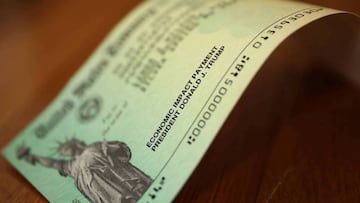Stimulus check: difference between payment in debit, check and direct deposit
The treasury said they would be sending out pre-paid stimulus debit cards opposed to stimulus checks and says they will have them all send soon.

The IRS made 13 May the cut-off date for direct debit information with stimulus checks being sent out to millions of Americans to help them through the coronavirus pandemic. They have already sent out 140 million stimulus checks and still have 10 million more to send. There is talk of another bill that would see a second stimulus check sent to US citizens but Republicans are against that relief plan and one senator referred to it as being ‘dead on arrival’ once it got to the House of Representatives.
The treasury announced on Monday that they are starting to send nearly 4 million Economic Impact Payments (EIPs) by prepaid debit card, instead of by paper check. According to that news from the treasury: "EIP Card recipients can make purchases, get cash from in-network ATMs, and transfer funds to their personal bank account without incurring any fees. They can also check their card balance online, by mobile app, or by phone without incurring fees. The EIP Card can be used online, at ATMs, or at any retail location where Visa is accepted. This free, prepaid card also provides consumer protections available to traditional bank account owners, including protections against fraud, loss, and other errors.
- Coronavirus US latest news
- When will a decision be made on a second stimulus payment?
- How can I talk to a real person when phoning the IRS hotline?
- How California is reopening its economy
- Would a second stimulus check come as a debit card?
The government are sending out checks in various forms. There is the prepaid EIP debit card and that can be obtained by going to My Payment Tool. According to CNET, here is what you need to know about the different forms of stimulus check payment and when you should expect the money.
The government has said it plans to have all of the stimulus checks sent out by May 2020 but you might not get your payment in the post until late May or Mid-June.
The @USTreasury has made 4 million Economic Impact Payments totaling more than $7 billion to hardworking Michiganders! pic.twitter.com/VulgvTs8B1
— The White House 45 Archived (@WhiteHouse45) May 21, 2020
How and when the IRS sends out stimulus checks
If you filed taxes in 2018 or 2019 and included direct deposit information: The IRS should automatically deposit your check in the bank account you provided on your tax return.
If you filed in 2018 or 2019 but didn't include direct deposit information: The IRS will mail you your payment.
If the bank account you put on your tax return is no longer active: The IRS will mail your check to the last address it has for you.
Related stories
If you had entered your banking information by Tuesday of last week: The IRS says your payment date should have been available in Get My Payment on Saturday.
If you entered your bank information after last Tuesday and before noon ET on Wednesday: Your payment date should be available beginning this coming Saturday.